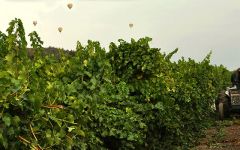Voss Vineyards Sauvignon Blanc / Semillon Botrytis (half-bottle) 2000
-
Wine
Enthusiast


Product Details
Your Rating
Somm Note
Winemaker Notes
-Wine Enthusiast
Professional Ratings
- Wine Enthusiast







At Voss we have over 20 years experience producing quality Napa Valley Sauvignon Blanc and multiple decades of experience producing Sauvignon Blanc in Australia and New Zealand. As a Sauvignon Blanc specialist we have the luxury of total focus in vineyard and winery practicing minimal intervention. A single sku sourced from a 100% certified single vineyard with a single focus on producing high quality wine reflective of region and remaining true to the wonderfully pure aromatics and texture of Sauvignon Blanc. The Voss Sauvignon Blanc style is crafted for freshness, vibrancy, lower alcohol, texture and length on the palate. The taste of the wine has a direct link to the vineyard and the way the wine is carefully nurtured and protected. Voss Vineyard Sauvignon Blanc is a single vineyard offering from the Yountville Appellation of California. Planted in 1978, the Morgaen Lee Vineyard has been farmed organically since 1986, minimal intervention ensures the purity of place is prominent in our wine. The Voss style ensures that it is one of the earliest picked vineyards in the region, making our wine one of the first releases from the new vintage each year. Our traditional night harvesting during the cool of the early morning helps to retain the vibrant Sauvignon Blanc aromas and flavors. The grapes go through “skin contact” for 24 hours before pressing, which amplifies the intense fruit flavors from the vineyard and helps to develop a lovely texture on the palate. The juice is fermented at cool temperatures in stainless steel tanks over three weeks with selected yeasts that further enhance the flavors. 10% of the wine is placed in barrel, (5% new French oak, 5% older French oak) for four months to add texture to the wine and offset some of the austere characters. The remaining 90% is stainless steel tank fermented. After racking and blending, the wine is bottled at Napa Wine Company using Stelvin screw cap closures.

Apart from the classics, we find many regional gems of different styles.
Late harvest wines are probably the easiest to understand. Grapes are picked so late that the sugars build up and residual sugar remains after the fermentation process. Ice wine, a style founded in Germany and there referred to as eiswein, is an extreme late harvest wine, produced from grapes frozen on the vine, and pressed while still frozen, resulting in a higher concentration of sugar. It is becoming a specialty of Canada as well, where it takes on the English name of ice wine.
Vin Santo, literally “holy wine,” is a Tuscan sweet wine made from drying the local white grapes Trebbiano Toscano and Malvasia in the winery and not pressing until somewhere between November and March.
Rutherglen is an historic wine region in northeast Victoria, Australia, famous for its fortified Topaque and Muscat with complex tawny characteristics.

One of the world's most highly regarded regions for wine production as well as tourism, the Napa Valley was responsible for bringing worldwide recognition to California winemaking. In the 1960s, a few key wine families settled the area and hedged their bets on the valley's world-class winemaking potential—and they were right.
The Napa wine industry really took off in the 1980s, when producers scooped up vineyard lands and planted vines throughout the county. A number of wineries emerged, and today Napa is home to hundreds of producers ranging from boutique to corporate. Cabernet Sauvignon is definitely the grape of choice here, with many winemakers also focusing on Bordeaux blends. White wines from Napa Valley are usually Chardonnay and Sauvignon Blanc.
Within the Napa Valley lie many smaller sub-AVAs that claim specific wine characteristics based on situation, slope and soil. Farthest south and coolest from the influence of the San Pablo Bay is Carneros, followed by Coombsville to its northeast and then Yountville, Oakville and Rutherford. Above those are the warm St. Helena and the valley's newest and hottest AVA, Calistoga. These areas follow the valley floor and are known generally for creating rich, dense, complex and smooth red wines with good aging potential. The mountain sub appellations, nestled on the slopes overlooking the valley AVAs, include Stags Leap District, Atlas Peak, Chiles Valley (farther east), Howell Mountain, Mt. Veeder, Spring Mountain District and Diamond Mountain District. Napa Valley wines from the mountain regions are often more structured and firm, benefiting from a lot of time in the bottle to evolve and soften.
